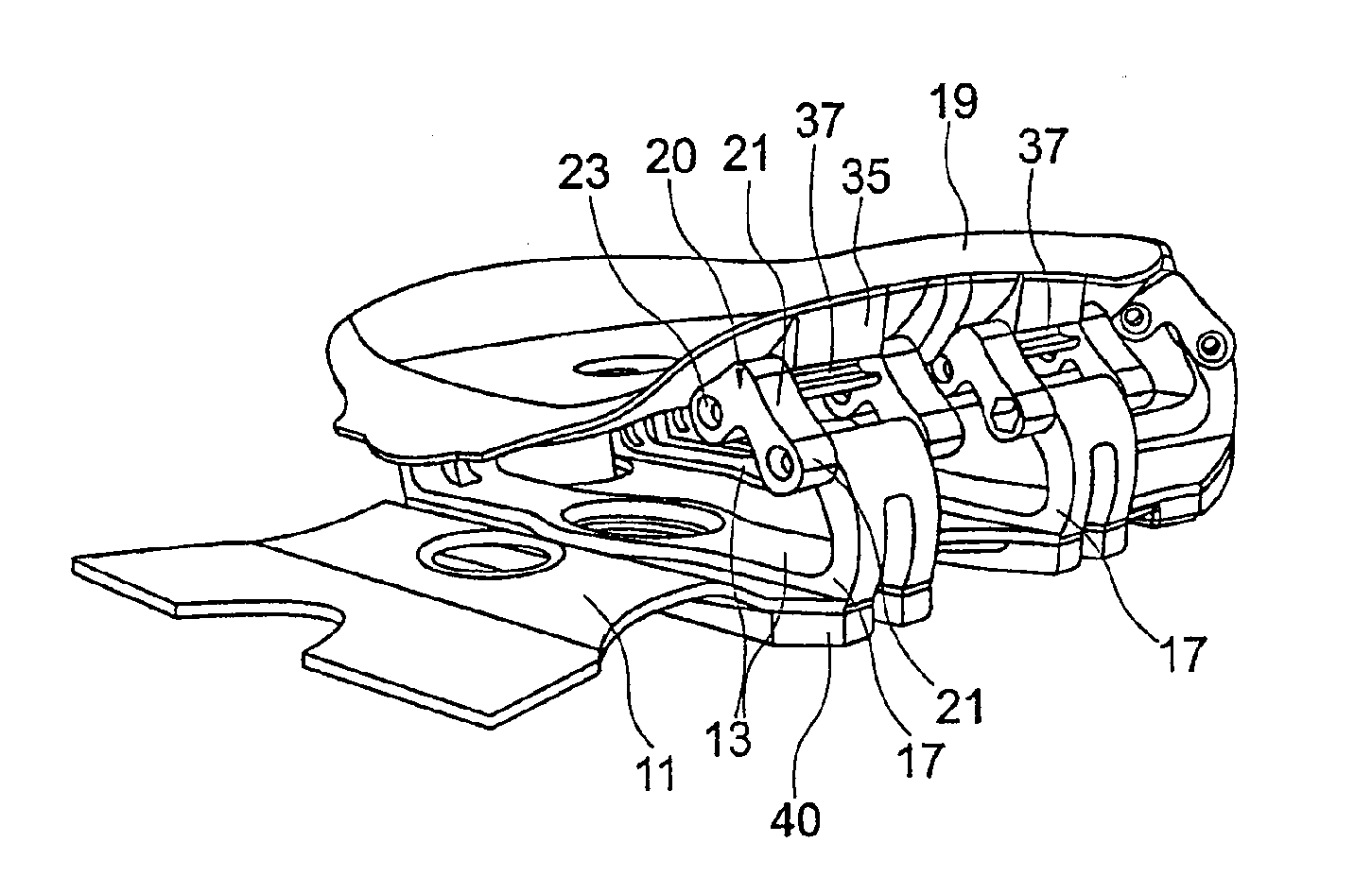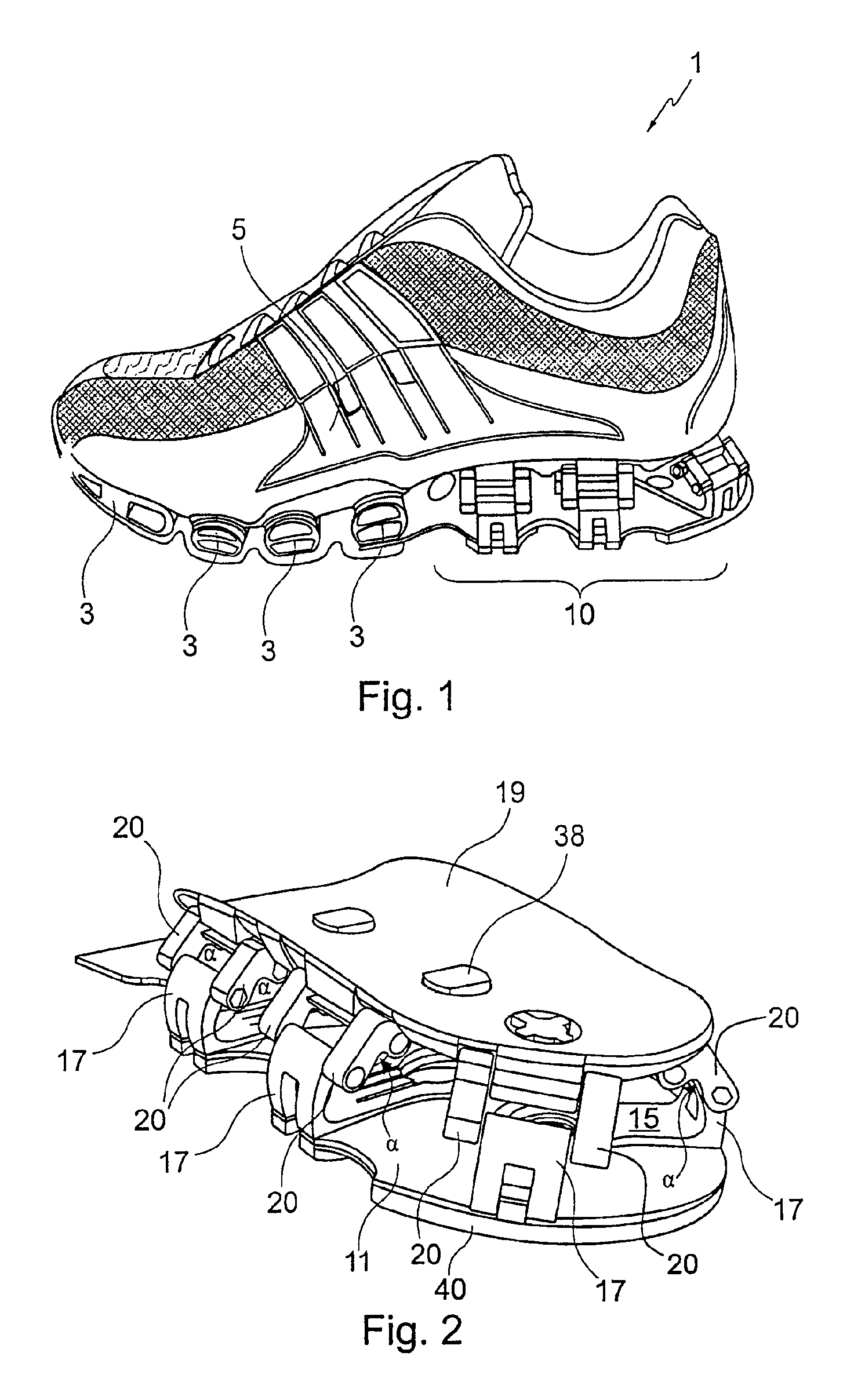Shoe having levered cushioning system
a cushioning system and shoe technology, applied in the field of shoes, can solve the problems of limited lifetime, low cushioning performance, comparatively high weight, etc., and achieve the effects of low overall weight of the shoe, improved cushioning properties, and convenient manufacture of the sho
- Summary
- Abstract
- Description
- Claims
- Application Information
AI Technical Summary
Benefits of technology
Problems solved by technology
Method used
Image
Examples
Embodiment Construction
[0029]In the following, embodiments of the invention are further described with reference to a sports shoe. However, it is to be understood that the present invention can be used in a plurality of different types of shoes. The invention is particularly relevant for shoes which are subjected to high loads, for example continuous loads such as in a running shoe or peak loads such as in a basketball shoe.
[0030]FIG. 1 presents a side view of a shoe 1 having in the rear part of the sole a cushioning system 10 which is further explained below. It is also possible to arrange the cushioning system 10 in the forefoot part or in other parts of the sole. However, the highest ground reaction forces occur in the heel part which makes an optimal cushioning system particularly important.
[0031]Standard cushioning elements are preferably arranged in the forefoot part of the shoe 1, as shown in FIG. 1, for example foamed elements (not shown) or the structural deformation elements 3 without foamed mat...
PUM
| Property | Measurement | Unit |
|---|---|---|
| angle | aaaaa | aaaaa |
| angle | aaaaa | aaaaa |
| angle | aaaaa | aaaaa |
Abstract
Description
Claims
Application Information
 Login to View More
Login to View More - R&D
- Intellectual Property
- Life Sciences
- Materials
- Tech Scout
- Unparalleled Data Quality
- Higher Quality Content
- 60% Fewer Hallucinations
Browse by: Latest US Patents, China's latest patents, Technical Efficacy Thesaurus, Application Domain, Technology Topic, Popular Technical Reports.
© 2025 PatSnap. All rights reserved.Legal|Privacy policy|Modern Slavery Act Transparency Statement|Sitemap|About US| Contact US: help@patsnap.com



